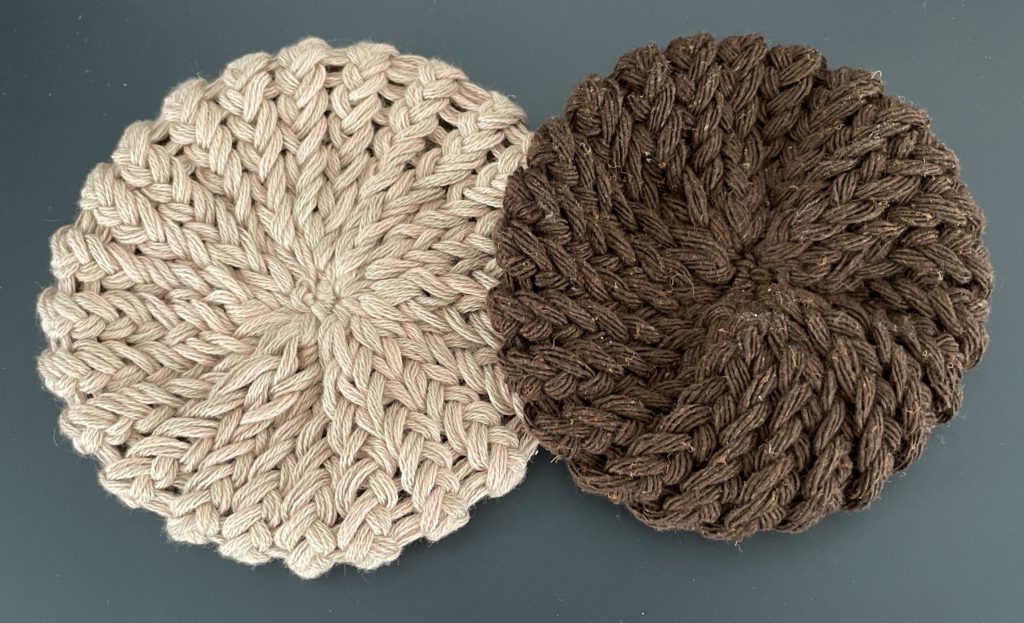Choosing Heat and Fire-Resistant Yarns: A Comparison of Natural Yarns and Synthetic Yarns
We all know that there are 2 main types of yarn, synthetic yarns and natural yarns. But did you know that there are big differences between them both? This blog post is going to look at just one difference – how heat and fire resistant they are.
In today’s textile industry, there is a growing concern for safety and sustainability in the production of various materials. Yarns, in particular, play a crucial role in determining the quality and functionality of a fabric. With the rise of fire-related incidents in various industries, the demand for fire-resistant yarns has seen a significant increase.
However, the use of synthetic yarns in apparel and home furnishings has also been on the rise . This is due to their versatility and cost-effectiveness.
This has sparked a debate between the effectiveness of fire resistant yarns versus synthetic yarns in providing protection against fire hazards.
Let’s get started.
Natural yarns and synthetic yarns explained
When it comes to yarns, there are two main categories to consider – natural and synthetic (man-made). Natural yarns are derived from plant or animal sources, such as cotton, silk, wool, and linen. They are known for their breathability, comfort, and durability. They also tend to be more eco-friendly, as they are biodegradable and renewable resources.
On the other hand, synthetic yarns are created through chemical processes using petroleum-based materials. Examples include polyester, nylon, and acrylic. People choose these yarns for their affordability, versatility, and specific properties such as moisture-wicking or stretchability.
However, they are not as breathable as natural fibres. They may also be less environmentally friendly. This is due to their production processes and use of non-renewable resources.
When exposed to high temperatures, synthetic yarns can melt, drip, or even catch fire, posing a significant safety risk.
As well as this, the combustion of synthetic fibres can release toxic gases and smoke. This thus increases further the danger in the event of a fire.
Understanding fire resistance in yarns
Fire resistance in yarns refers to the ability of a yarn to resist ignition and slow the spread of flames in the event of a fire. This is particularly important in items like clothing, blankets, or curtains, which may be exposed to heat sources.
Benefits of using natural yarns for fire resistance
Fire resistant yarns provide an added layer of protection, reducing the risk of serious injuries or fatalities resulting from burns. Additionally, these yarns often exhibit excellent durability, maintaining their fire-resistant properties even after repeated exposure to heat and flames. This ensures long-lasting protection and peace of mind for users.
Natural yarns and heat resistance in every day use
In addition to their superior flame retardant properties, natural yarns offer excellent heat resistance in everyday situations. This therefore makes them an ideal choice for a wide range of practical applications.
Whether you’re using knitted items as protective barriers for hot surfaces or as functional accessories in your kitchen, natural yarns provide added safety and peace of mind.
Mug coasters
Furniture can be heat damaged if hot drinks are left on it. Natural yarn coasters are a stylish and functional solution to this.
Knitted coasters made from wool or organic cotton yarns offer excellent heat resistance. They allow you to place hot beverages on them without fear of damage to your tabletops or surfaces.

Additionally, the absorbent nature of natural fibres helps to prevent condensation from pooling on the coaster, keeping your furniture dry and protected.
Saucepan stands
In the kitchen, natural yarn pot holders or trivets provide a reliable barrier between hot saucepans and your countertops or kitchen surfaces. Made from heat-resistant wool or organic cotton yarns, these knitted accessories offer an extra layer of protection, allowing you to safely place hot pots and pans on your kitchen counters without risking damage or burns.
Versatility and durability
In addition to their heat-resistant properties, natural yarns are also highly durable and long-lasting, making them suitable for frequent use in high-traffic areas of your home.
Whether you’re using knitted items as protective barriers in the kitchen or as decorative accents throughout your living space, natural yarns offer versatility, functionality, and style in equal measure.

Practical applications
When selecting yarn for projects such as baby blankets, clothing, or home decor items, it’s essential to prioritise safety and sustainability. By opting for fire-resistant and eco-friendly yarns made from natural fibres, you can create beautiful, functional pieces. These not only look great but also provide peace of mind knowing that they offer an extra layer of protection in the event of a fire.
Final thoughts
Synthetic yarns may not always be the best choice when it comes to heat and fire resistance. Natural yarns, with their inherent flame retardant properties and resistance to melting, offer a safer and more reliable option for projects where fire safety is paramount.
Natural yarns, such as wool, cotton, linen, and bamboo, offer superior heat resistance and durability compared to synthetic alternatives, making them an ideal choice for a wide range of practical applications in the home.
Whether you’re looking for coasters to protect your furniture from hot beverages or pot holders to safeguard your kitchen surfaces from hot cookware, natural yarns provide the safety, reliability, and peace of mind you need for everyday use.
So before you start your next knitting project, consider the importance of heat resistance and choose yarns that will help keep you and your loved ones safe.
